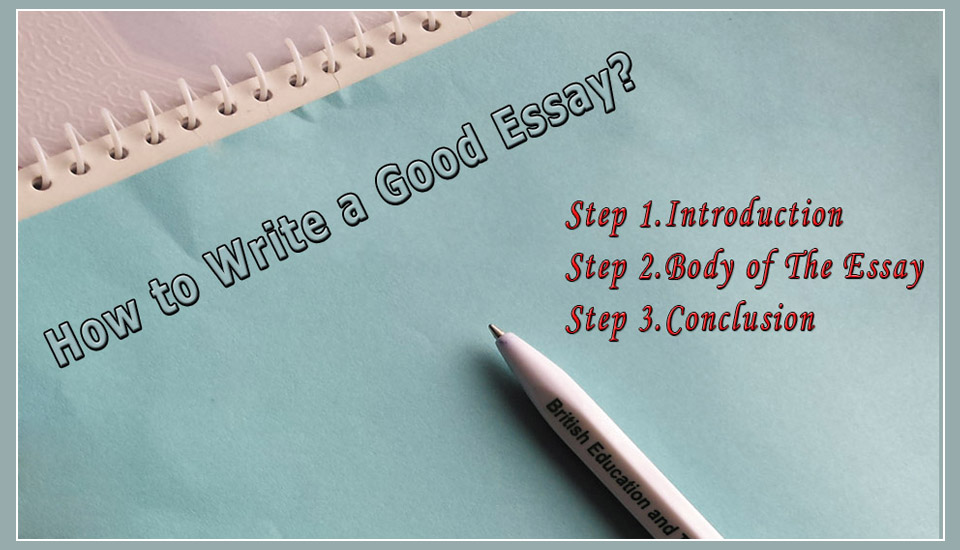A composition or an essay is a written piece of work that is short and addresses just one subject. Indeed essay writing is one of the significant a task for students to learn how to write a good essay. The following is a general structure to write an essay and for many kinds of writing.

How to Write a Good Essay?
Write an essay in 3 stages
It is significant to have an essay outline in place before you start, this will help you write an excellent essay effortlessly. An essay plan is the essay structure and can be divided into 3 parts:
1. Introduction
2. Body of The Essay
3. Conclusion
Each of these is made of paragraphs and paragraphs are groups of sentences which revolve a single idea.
Step 1: Introduction
The introduction to the essay is the first paragraph in writing. It is usually very short and sets the scene or introduces the subject of the essay, the reader’s attention should be snagged right here at the introduction. The introduction paragraph can be 1 dramatic sentence or 2-3 sentences long.
The introduction is intended to draw the reader into the body of material to follow. It should begin with a general statement or question, sometimes called the “thesis statement” or “thesis question,” followed by a quick narrowing down to the main theme to be developed in the body. Set the stage quickly, give appropriate background, and then move right into a transition sentence that will set up the reader for the body.
What is a thesis statement?
Whenever you write an essay you should have a main point, a main idea, or central message. The argument(s) you make in your body of the essay should support this main idea. So, the sentence that you write in introductory paragraph is the main idea and called the thesis statement.
Step 2: The body of the essay.
Each point can be divided into paragraphs which will collectively make up the body of the essay. The body of a written piece is where you provide additional detail, defend, and expand the thesis introduced in the introduction. The body should support your main contention or argument with supporting evidence and possible objections. The body includes the following components:
Enlargement:
Spell out the details by defining, or by clarifying and adding relevant, related information.
Argumentation:
Give the reasons, justifications, and argument for the position or view you have taken in the introduction. Draw inferences for the reader and explain the significance or assertions or claims being made. It will be good to include relevant idioms to your essay. Once the body of the essay is completed it is time to wrap up your essay.
Step 3: The conclusion
The conclusion is literally the wrap up where you give your impression and complete the story; you could finish it with a short narrative and amusing incident which will be satisfying to the reader. Normally a single paragraph, brief and short to the point will suffice. The purpose of the conclusion is to leave the reader with an idea or thought that captures the essence of the body while provoking further reflection and consideration. To simplify, the conclusion of the essay is like when you send a present to someone, initially you take the stuff which you want to send as a gift, and then put that in a box finally you cover the box with something this is the conclusion.
The structure about how to write a good essay mentioned here will be useful for many other kinds of writing, as an illustration you can use these steps to write a good composition. Remember you won’t improve your writing skill unless you have practice a lot.

2 comments
Thank you so much, it helped me a lot.
You are welcome Jonas, and thank you for appreciation.